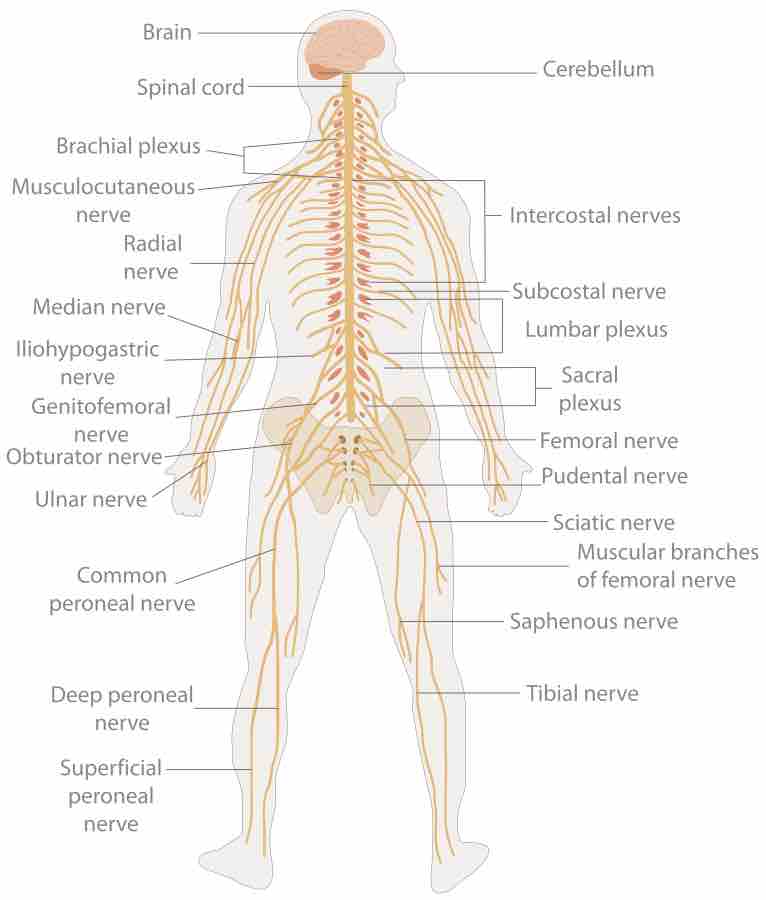The nervous system allows organisms to sense, organize, and react to information in the environment. The basic unit of the nervous system is the neuron. Synapses form between the neurons, allowing them to communicate to other neurons or other systems in the body. The general flow of information is that the peripheral nervous system (PNS) takes in information through sensory neurons, then sends it to the central nervous system (CNS) to be processed. After processing, the CNS "tells" the PNS what to do—what muscles to flex, whether the lungs need more oxygen, which limbs need more blood, any number of biological processes—and the PNS makes it happen through muscle control. The neurons responsible for taking information to the CNS are known as afferent neurons, while the neurons that carry the responses from the CNS to the PNS are known as efferent neurons.

The human nervous system
The nervous system of the human body, including the brain and spinal cord (central nervous system) and all the nerves of the body (peripheral nervous system).
The nervous system can be divided into two major parts—the central nervous system (CNS) and the peripheral nervous system (PNS).
Central Nervous System
The central nervous system includes the spinal cord and the brain. The brain is the body's main control center. The main function of the CNS is the integration and processing of sensory information. It synthesizes sensory input to compute an appropriate motor response, or output.
Peripheral Nervous System
The peripheral nervous system includes a large system of nerves that are linked to the brain and spinal cord. It is comprised of sensory receptors, which process changes in internal and external stimuli and communicate that information to the CNS. The PNS can be further subdivided into the autonomic nervous system and the somatic nervous system.
Autonomic Nervous System
The autonomic nervous system regulates involuntary actions such as internal-organ function and blood-vessel movement. It supplies nerves to ("innervates") cardiac and smooth muscle tissue. The autonomic nervous system is made of two components, which work in opposition to one another: the sympathetic nervous system, responsible for the body's "fight-or-flight" response to danger, and the parasympathetic nervous system, which calms the body back down.
Somatic Nervous System
The somatic nervous system controls voluntary movements such as those in the skin, bones, joints, and skeletal muscles.
Both of these systems within the PNS work together with the CNS to regulate bodily function and provide reactions to external stimuli.